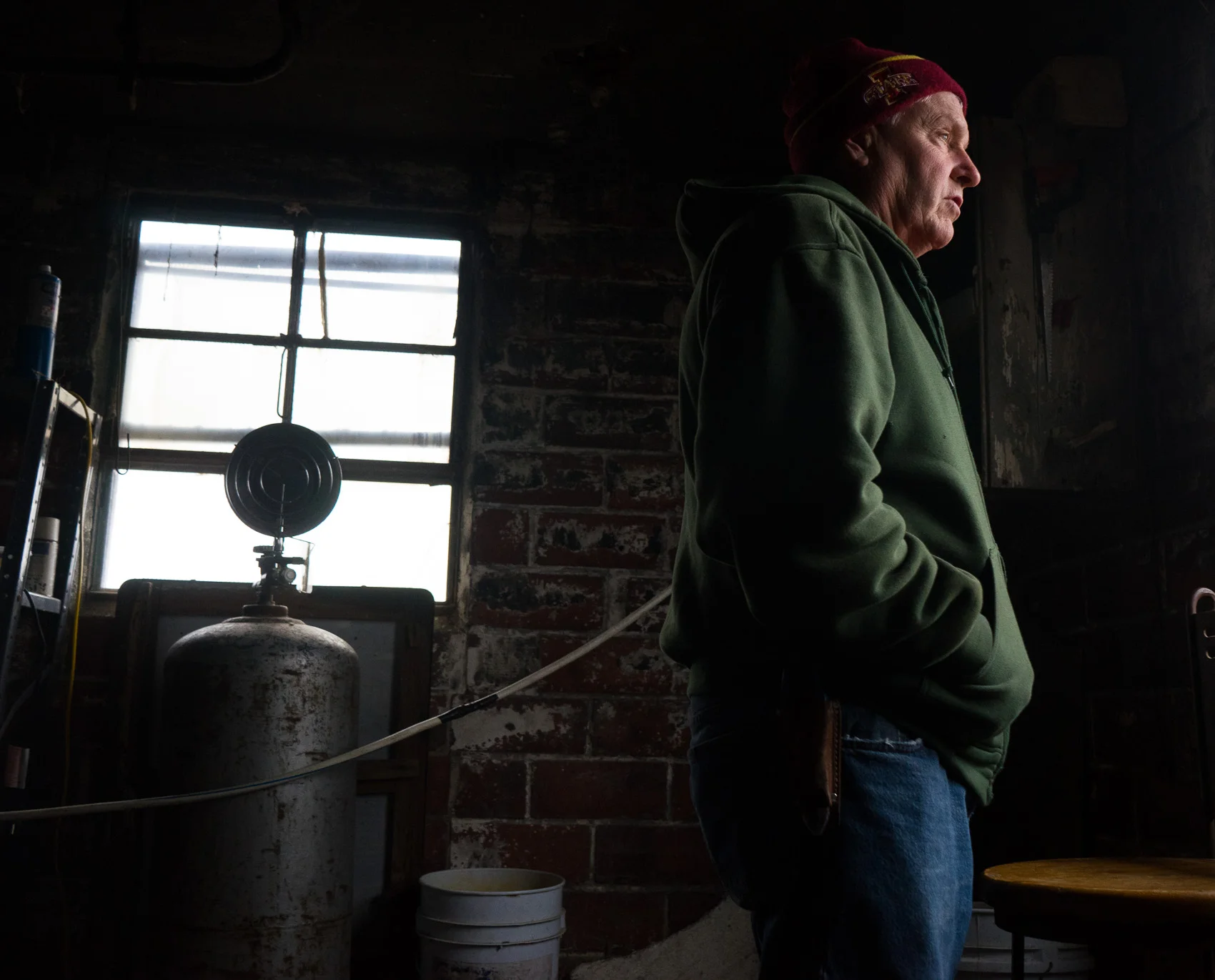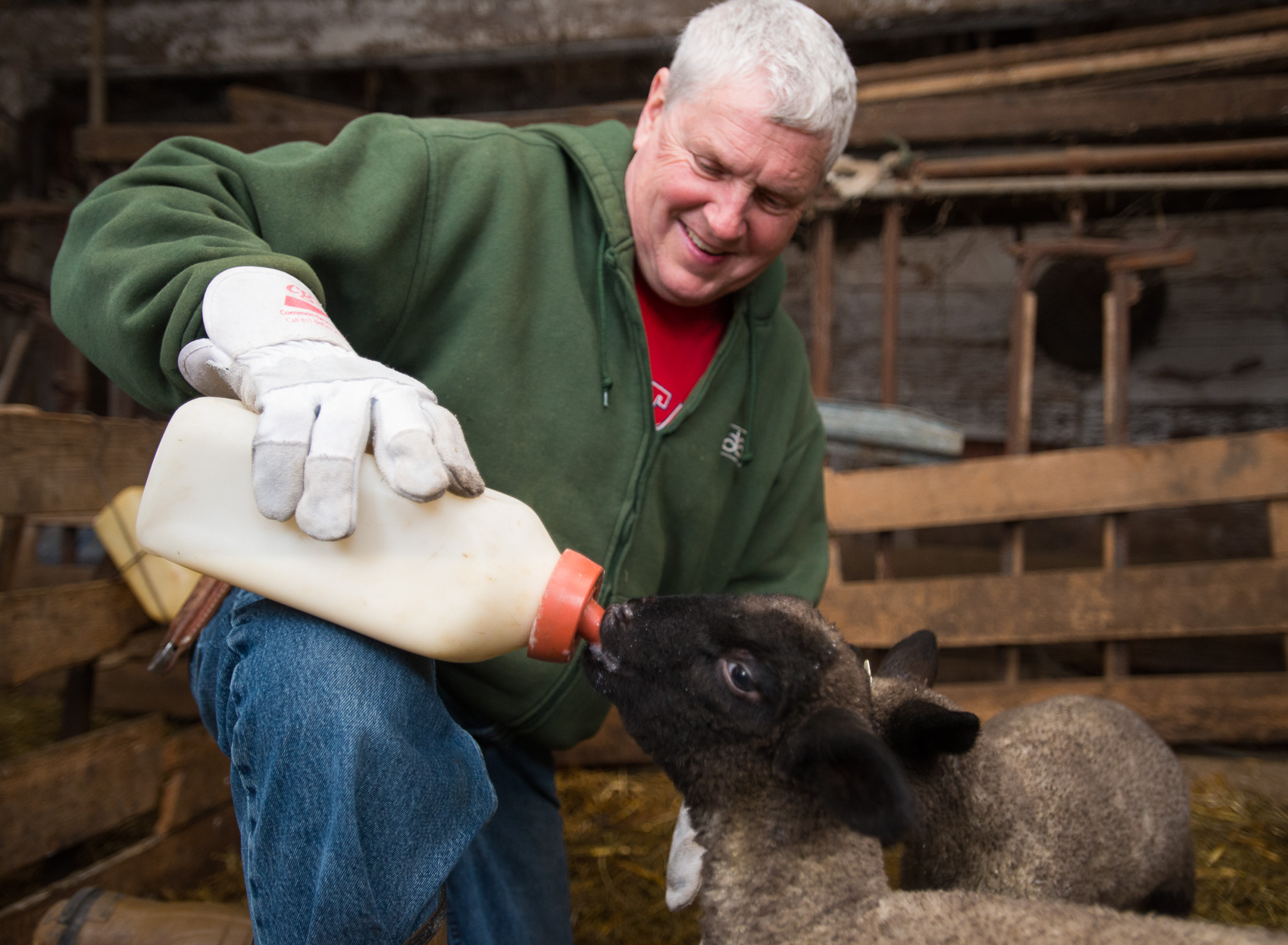Lambing season in Madrid

By Joseph L. Murphy
Morey Hill peered through the window of his rustic barn out of habit. Outside his ewes and lambs were eating from a bale of hay and resting in a large pen attached to the barn. His brief glance was enough to assure him that everything was okay with the flock.
Morey Hill looks out of a window in his barn to check his flock. (Photo: Joseph L. Murphy)
Behind Hill was the task at hand. Three empty bottles ready to be filled with lamb milk replacer for his three lambs that we’re beginning to stir in the pens on the other side of the wall.
“You can tell this was an old dairy barn,” Hill said while looking around the room. “I keep the newborn lambs and their mothers in here because you never know what the Iowa weather is going to bring.”
The barn he is referring to was the center of life on the farm when it was built most likely in the first two decades of the last century. Horses were on one side, and the dairy cows were on the other. A full haymow continues to hold feed for his sheep.
Today the barn is filled with two ewes, a lamb that was born less than 12 hours before and three other bummer or orphan lambs.
Hill began pouring the milk into the bottles while capping them off with faded red nipples. A process he has done many times over the last month and a half.
“I’m nearing the end of the lambing season,” he said as he walked into the main room of the barn with bottles in hand.
The lambing season has proven to be successful for Hill as he nears the finish line.
“You always hope for twins or at least for a 1.5 lamb to ewe ratio,” Hill said. “I was off that number but for the most part it has been a good season.”
Hill plans on weaning the 20 new lambs from their mothers within the month and will look to the market to decide his future steps. He can choose to sell the lambs when they reach 50 to 60 pounds, or he could feed them until they reach market weight.
Morey Hill feeds a lamb from a bottle at his rural Madrid farm. (Photo: Joseph L. Murphy)
“I’ve been raising sheep for 15 years here,” he said while giving the lambs the bottles. “I’ve been around sheep since I was young. They’re nice to have around and we have the space.”
Hill finished the feeding, rinsed the bottles and placed them on a counter to dry. He will repeat the bottle feedings for the next couple of weeks before weaning the lambs and introducing them to the rest of the flock. He made one more welfare check on the sheep before stepping out into the cool spring air while closing the barn door behind him.
Another lambing season is in the books for Hill, but the care for the animals and the tradition of his flock will continue for years beyond this season.
Originally published for the Iowa Soybean Association. Find more great stories at: www.iasoybeans.com/news
For more than two decades, Joseph L. Murphy has had the pleasure of meeting and connecting with people from all walks of life through photography. He has photographed presidents and heads of state, traversed the winding alleyways of the Fes Medina in Morocco, photographed the sprawling countryside and people that make up Argentina and covered events that have defined the U.S. Most recently, Murphy’s travels have taken him to Cambodia, Mexico, China, Vietnam and Ecuador.
He has spent the past 20 years specializing in agriculture photography for multiple organizations, publications and marketing projects.
A graduate of the University of Iowa, Murphy determined at an early age that his love of photography would shape his vision for life.


